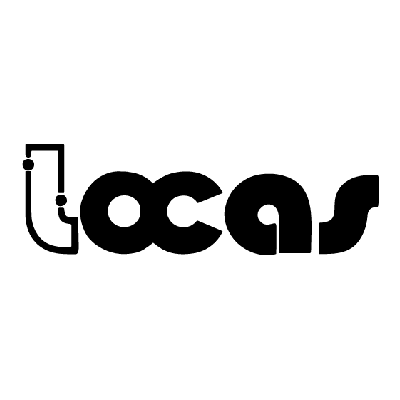Python, known for its user-friendly and object-oriented nature, introduces a powerful concept that adds a layer of flexibility and adaptability to your code: polymorphism. This comprehensive blog aims to uncover how polymorphism in Python simplifies development, improves readability, and enables you to write more adaptable, efficient, and elegant Python code.
Understanding Polymorphism in Python
Polymorphism in Python is a fundamental principle of object-oriented programming. It allows objects to adopt various forms, enhancing code flexibility and reusability. Through polymorphism, different object classes can be accessed through a unified interface, enabling functions or operators to behave differently based on their input. This provides a streamlined, generalized approach to coding, as methods can operate on objects from different classes, simplifying implementation and modification in software development.

Mechanisms of Polymorphism in Python
In Python, polymorphism is implemented through various mechanisms:
1. Duck Typing:
Duck typing is a concept in Python that focuses on the behavior of objects rather than their type or class. It allows you to work with objects based on their capabilities or methods, rather than explicitly checking their types.
Example:
class Dog:
def speak(self):
return “Woof!”
class Cat:
def speak(self):
return “Meow!”
def animal_sound(animal):
return animal.speak()
Usage of duck typing
dog = Dog()
cat = Cat()
print(animal_sound(dog)) Output: Woof!
print(animal_sound(cat)) Output: Meow!
In this example, the `animal_sound` function accepts objects of different classes (Dog and Cat) as long as they have a speaking method.
2. Operator Overloading:
Operator overloading allows you to define how operators like +, -, , etc., behave when applied to objects of your custom classes. This is achieved by defining special methods in your class, such as `__add__`, `__sub__`, `__mul__`, etc.
Example:
class ComplexNumber:
def __init__(self, real, imag):
self.real = real
self.imag = imag
def __add__(self, other):
return ComplexNumber(self.real + other.real, self.imag + other.imag)
def __str__(self):
return f”{self.real} + {self.imag}i”
Usage of operator overloading
num1 = ComplexNumber(2, 3)
num2 = ComplexNumber(1, 4)
result = num1 + num2
print(result) Output: 3 + 7i
Here, the `__add__` method specifies how the + operator should work with instances of the ComplexNumber class.
3. Method Overriding:
Method overriding allows a subclass to provide a specific implementation of a method that is already defined in its superclass. This is a form of polymorphism where a subclass can replace or extend the behavior of its superclass’s method.
Example:
class Animal:
def speak(self):
pass
class Dog(Animal):
def speak(self):
return “Woof!”
class Cat(Animal):
def speak(self):
return “Meow!”
Usage of method overriding
dog = Dog()
cat = Cat()
print(dog.speak()) Output: Woof!
print(cat.speak()) Output: Meow!
In this example, both the Dog and Cat classes override the speak method defined in the Animal superclass to provide their own implementations.
Examples of Polymorphism in Python
Polymorphism in Python comes in various forms, such as class structures, flexible functions, and differences inherited from parent classes, making your code more versatile and practical.
Polymorphism with Classes
In Python, polymorphism can be exemplified through class definitions. Different classes can implement the same method name, but each class provides its own unique behavior. This way, you can create a common interface, and various classes can implement it differently.
Example:
class Shape:
def calculate_area(self):
pass
class Circle(Shape):
def __init__(self, radius):
self.radius = radius
def calculate_area(self):
return 3.14 self.radius 2
class Rectangle(Shape):
def __init__(self, length, width):
self.length = length
self.width = width
def calculate_area(self):
return self.length self.width
Usage of polymorphism with classes
shapes = [Circle(5), Rectangle(4, 6)]
for shape in shapes:
print(f”Area: {shape.calculate_area()}”)
Output:
Area: 78.5
Area: 24
Polymorphism with Functions
Polymorphism with functions, also known as duck typing, allows you to work with objects based on their behavior rather than their specific types.
Example:
class Circle:
def area(self, radius):
return 3.14159265359 radius 2
class Square:
def area(self, side_length):
return side_length 2
def calculate_area(shape, size):
return shape.area(size)
Usage of polymorphism with functions
circle = Circle()
square = Square()
print(calculate_area(circle, 5)) Output: 78.539816339745
print(calculate_area(square, 4)) Output: 16
Polymorphism with Inheritance
Inheritance allows you to achieve polymorphism by creating a superclass with a method and then overriding that method in its subclasses. This way, you can call the same method name on objects of different classes and obtain different results.
Example:
class Vehicle:
def move(self):
return “Vehicle is moving”
class Car(Vehicle):
def move(self):
return “Car is moving on the road”
class Boat(Vehicle):
def move(self):
return “Boat is sailing in the water”
Usage of polymorphism with inheritance
vehicles = [Vehicle(), Car(), Boat()]
for vehicle in vehicles:
print(vehicle.move())
Output:
Vehicle is moving
Car is moving on the road
Boat is sailing in the water
Benefits of Using Polymorphism in Python
Using polymorphism in Python offers several benefits that contribute to code development and maintenance:
1. Increased Code Reuse:
– Polymorphism allows you to write code that can be reused with different types of objects, provided they adhere to a common interface or behavior.
– This reduces the need for duplicate code and promotes a more efficient development process.
2. More Flexible Code:
– Polymorphism makes your code more adaptable to changes and future extensions.
– When you introduce new object types, you can create new subclasses or implementations without altering existing code.
3. Improved Readability:
– Polymorphism promotes abstraction, allowing you
to focus on high-level concepts rather than specific object types.
– Code that utilizes polymorphism tends to be more concise and easier to understand because it deals with common behaviors rather than implementation details.
4. Simplified Maintenance:
– With polymorphism, maintenance becomes more straightforward because you deal with common interfaces or base classes.
– Changes and bug fixes can be applied at the abstract level, affecting all subclasses uniformly and reducing the chances of introducing inconsistencies.
5. Enhanced Testing:
– Polymorphism can simplify the testing process. You can create generic test cases that apply to multiple objects that share a common interface.
– This reduces the need for writing separate test cases for each object type, improving testing efficiency.
In conclusion, polymorphism is a potent concept within Python that offers a crucial dimension of flexibility and reusability in software development. It empowers developers to create code that is highly adaptable, reusable, and comprehensible. The explored examples showcase how diverse objects can seamlessly integrate into a unified framework, and the highlighted benefits underscore its pivotal role within Python and the broader realm of object-oriented programming.





